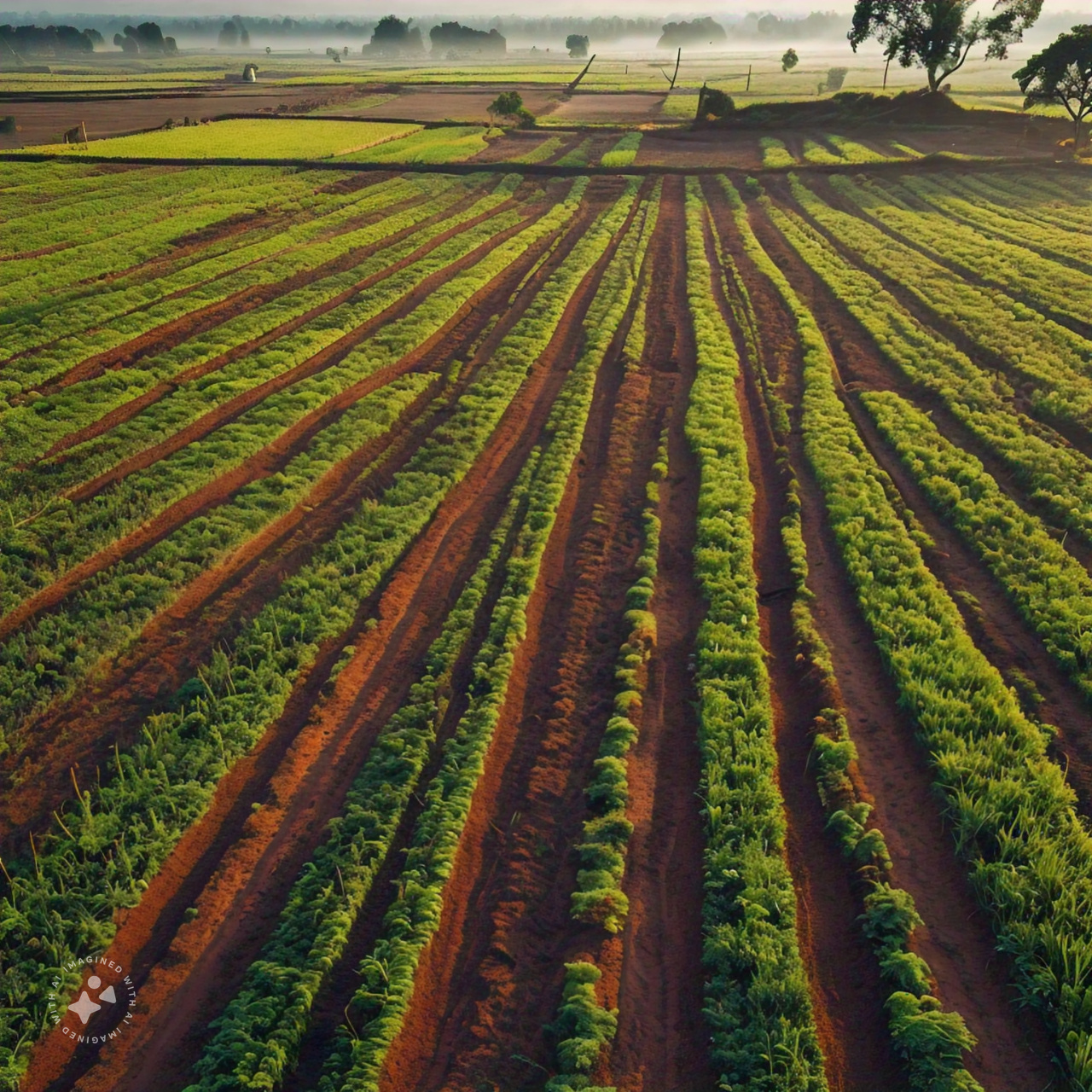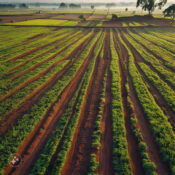
Agricultural Land Lease: A Step-by-Step Guide To Leasing Your Farm Land
Leasing agricultural land can be a fantastic opportunity, whether you’re a landowner looking to make some extra income or a farmer needing access to land without the steep costs of buying it. An agricultural land lease offers a partnership that can be mutually beneficial when approached with the right mindset and clear understanding. Let’s explore how to navigate the process, step by step, so you can enter into an agricultural land lease that’s both fair and fruitful.
Understand the Basics of an Agricultural Land Lease
First things first—what exactly is an agricultural land lease? Simply put, it’s an agreement where the landowner allows a tenant (the farmer) to use their land for agricultural purposes in exchange for rent. Unlike purchasing, leasing doesn’t transfer ownership, but it gives the tenant the right to farm the land for a specified period.
Types of Agricultural Land Leases:
- Cash Rent Lease: This is the most straightforward arrangement. The tenant agrees to pay a fixed rent amount, typically on an annual or monthly basis. It’s a predictable income stream for the landowner and allows the tenant to plan their expenses with certainty.
- Crop Share Lease: In this setup, the tenant and landowner share the profits (and sometimes the risks) from the crops grown. This can be appealing to landowners who want a more active role in the farming process without actually doing the farming themselves.
- Flexible Cash Lease: This option blends the predictability of cash rent with the variability of a crop share lease. The rent is often tied to the success of the crop, so if it’s a good year, the landowner benefits, and if it’s a tough season, the tenant isn’t overly burdened by high rent costs.
Choosing the right type of agricultural land lease depends on your goals, your appetite for risk, and how involved you want to be in the farming operations. Each type has its unique advantages, so it’s essential to weigh your options carefully.
Determine Your Objectives for the Agricultural Land Lease
Before getting too deep into the leasing process, it’s crucial to define what you want out of the agricultural land lease arrangement. As a landowner, are you primarily interested in a steady, reliable income, or are you excited about the possibility of earning more through a profit-sharing agreement? On the other hand, as a tenant, you need to think about your farming goals—do you want to experiment with new crops, expand your livestock operations, or focus on organic farming?
Clearly understanding your objectives will help you select the right type of agricultural land lease and terms. It will also ensure that both parties are on the same page from the outset, reducing the likelihood of misunderstandings or conflicts down the road.
Research the Market for Agricultural Land Leases

Once your objectives are clear, the next step is to do some market research specifically related to agricultural land leases. This is where you gather the necessary information to set realistic expectations for the lease. If you’re a landowner, it’s important to know the average rental rates in your area. This will help you set a fair price that is competitive yet profitable.
For tenants, understanding the local market for agricultural land leases is equally important. This includes knowing the availability of land, what types of farming are most successful in the area, and the going rates for leasing. Additionally, you’ll want to familiarize yourself with any legal or zoning requirements that might impact how you can use the land.
Don’t rush this step—taking the time to thoroughly research the market will pay off in the long run by ensuring that you enter into an agricultural land lease that is fair and aligned with current conditions.
Create a Detailed Agricultural Land Lease Agreement
The lease agreement is the foundation of your agricultural land lease. It’s the document that spells out all the terms and conditions, ensuring that both parties are clear on what’s expected. A well-crafted agricultural land lease should include:
- Lease Duration: Clearly define the length of the lease, including start and end dates. You might also want to include provisions for renewal or early termination.
- Rent Amount: Specify the rent amount, how and when it should be paid, and any conditions for adjustments (like changes in market rates or crop yields).
- Land Use: Outline exactly how the land will be used. This can include details like the types of crops that can be planted, whether livestock is permitted, and any restrictions on the use of chemicals or fertilizers.
- Maintenance and Repairs: Define who is responsible for maintaining the land and any structures on it. This might include routine tasks like fence repairs, road maintenance, or irrigation upkeep.
- Termination Clause: Include provisions for ending the lease early, whether due to breach of contract, mutual agreement, or other circumstances. Be sure to specify any penalties or notice requirements.
It’s always a good idea to have a lawyer review the agricultural land lease agreement to ensure it’s legally sound and protects your interests. This small investment can prevent significant issues down the line.
Negotiate Terms for the Agricultural Land Lease
Negotiation is where the rubber meets the road in an agricultural land lease. This is your opportunity to fine-tune the lease terms so that they meet the needs of both parties. Approach this step with an open mind—remember, the goal is to create a win-win situation.
For example, a landowner might want to include a clause requiring the tenant to maintain soil health, while a tenant might request flexibility in the payment schedule, especially during lean years. Both parties should feel comfortable voicing their needs and concerns. Successful negotiation often involves compromise, so be prepared to give a little to get a little.
The key to a successful negotiation for an agricultural land lease is clear communication. Don’t be afraid to ask questions, seek clarification, and ensure that both parties fully understand and agree to the terms.
Conduct a Land Inspection Before Finalizing the Agricultural Land Lease
Before you sign on the dotted line, it’s vital to conduct a thorough inspection of the land as part of your agricultural land lease process. For tenants, this is your chance to assess the land’s suitability for your farming needs. Check the soil quality, water availability, and any existing infrastructure like barns, fences, or irrigation systems. If there are any potential issues, it’s better to identify them now rather than after the lease is signed.

For landowners, the inspection is equally important. Document the current condition of the land, noting any existing damage or areas that may require attention. This can help prevent disputes later on regarding the condition of the property when the agricultural land lease ends.
Consider bringing along a professional inspector or an agricultural consultant, especially if you’re not familiar with evaluating farmland. Their expertise can provide valuable insights and help ensure that the land is suitable for its intended use.
Sign the Agricultural Land Lease and Start Farming
Once everything is in order—the lease agreement is finalized, and both parties are satisfied—it’s time to sign the agricultural land lease. This is an exciting moment, as it marks the beginning of a new partnership.
After signing, the tenant can start farming according to the terms laid out in the agricultural land lease. But remember, this isn’t the end of the journey. Ongoing communication between the landowner and tenant is crucial for a successful lease. Regular check-ins can help address any issues that arise and ensure that both parties are happy with the arrangement.
Both parties should also keep detailed records of all communications, payments, and any changes or updates to the agricultural land lease. This helps maintain transparency and can be invaluable if any disputes arise.
Review and Renew the Agricultural Land Lease
As the lease term approaches its end, it’s important to review how things went. Did the agricultural land lease arrangement meet everyone’s expectations? Were there any challenges or surprises? This review process is a chance to reflect on what worked well and what might need to be adjusted.
If both parties are happy with the agricultural land lease arrangement, renewing the lease can be straightforward. However, it’s also an opportunity to make any necessary changes, such as adjusting the rent, updating the terms of land use, or addressing any issues that came up during the initial lease period.
If renewal isn’t in the cards, the review can still be beneficial, providing insights that can be applied to future agricultural land leases.
Seek Professional Advice for Your Agricultural Land Lease

Don’t underestimate the value of professional advice throughout this process. Whether you’re a landowner or a tenant, consulting with experts—like real estate agents, agricultural consultants, or attorneys—can help you navigate the complexities of an agricultural land lease.
These professionals can offer guidance on market conditions, legal requirements, and best practices for drafting and negotiating lease agreements. Their input can help you avoid common pitfalls and ensure that your agricultural land lease is fair, legally sound, and tailored to your specific needs.
While it might seem like an added expense, the peace of mind and protection you gain are well worth the investment.
Build a Good Relationship During the Agricultural Land Lease
Finally, one of the most important aspects of a successful agricultural land lease is the relationship between the landowner and tenant. Like any good partnership, it thrives on trust, respect, and open communication. Make an effort to understand each other’s needs and concerns, and be proactive in addressing any issues that arise.
A strong relationship can make all the difference, turning a simple agricultural land lease agreement into a long-term, mutually beneficial partnership. It can also lead to smoother negotiations, more flexible arrangements, and a more enjoyable experience for everyone involved.
Conclusion
Entering into an agricultural land lease is a journey that can lead to great rewards when done thoughtfully and with care. By following these steps, you can create an agricultural land lease agreement that not only meets your needs but also fosters a positive, productive relationship between landowner and tenant. Whether you’re leasing out land or farming someone else else’s, this guide can help you navigate the process with confidence and success. Happy leasing!



